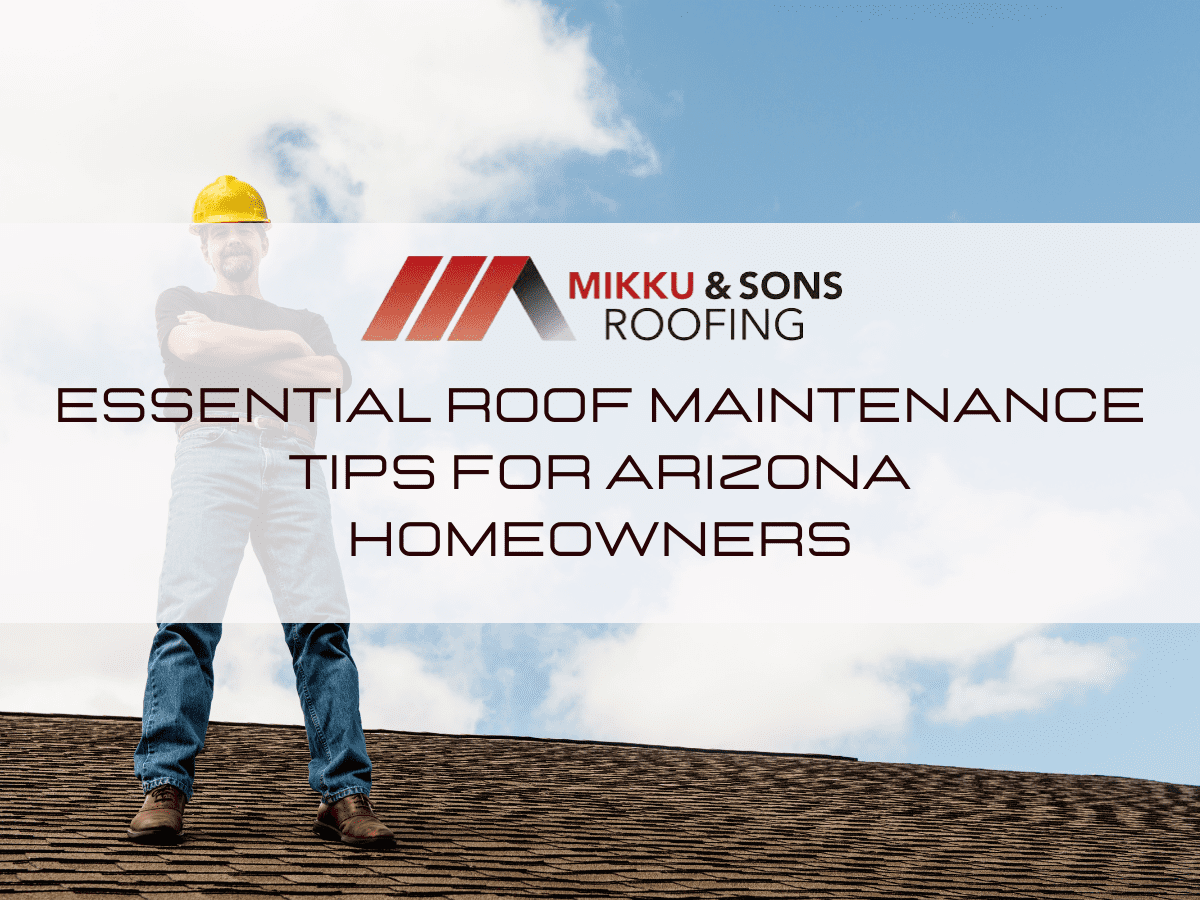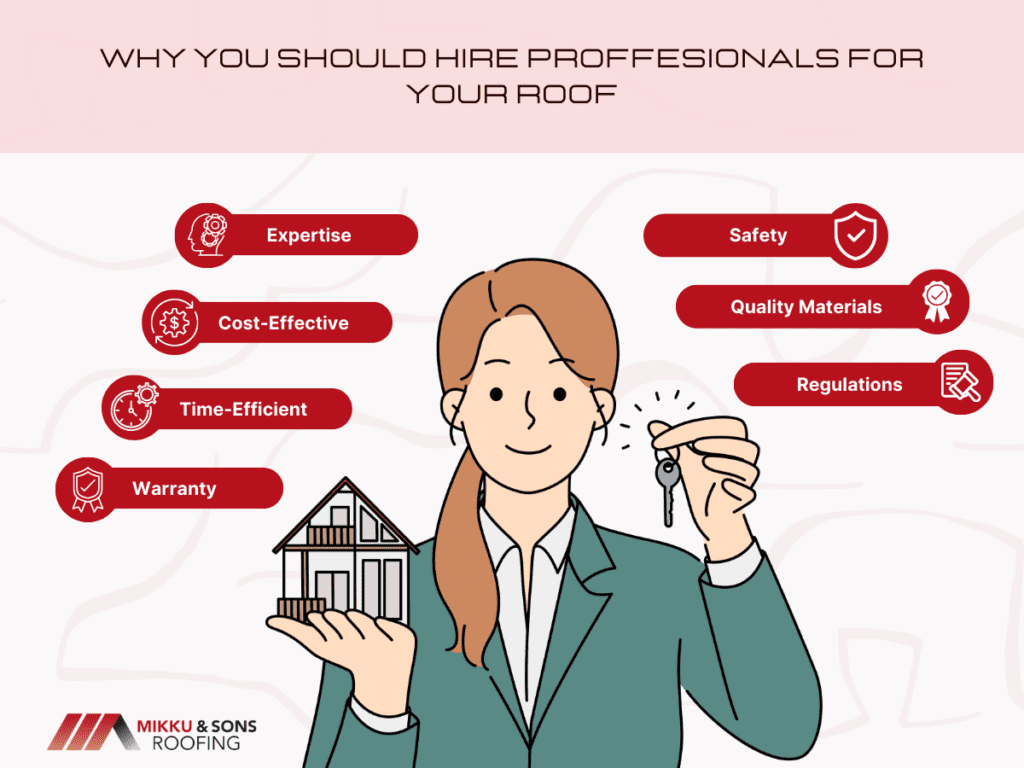

Being a homeowner is one of the most fulfilling experiences one can have, but it comes with its own set of responsibilities, particularly when it comes to home maintenance. One area that often gets overlooked is the roof, a critical part of your home that protects you from the elements.
For Arizona homeowners, the climate presents unique challenges for roof maintenance, especially given the state's intense heat, dryness, and occasional heavy rains during the monsoon season. In this comprehensive guide, we present a list of essential roof maintenance tips that are tailored to Arizona's unique climatic conditions.

Regular roof inspections are vital to maintaining the longevity of your roof. Ideally, your roof should be inspected twice a year, once before the intense summer heat hits and once before the monsoon season begins. Look for signs of wear and tear, such as loose, missing, or damaged shingles or tiles.
In Arizona, the intense sunlight can cause the roof materials to age prematurely. Therefore, pay close attention to any signs of discoloration or warping. Hiring a professional roofing contractor for these inspections is advisable because they have the expertise to spot potential issues that an untrained eye might miss.
When thinking about roof maintenance in Arizona, cleaning should be high on the list. It may not seem as critical as other tasks, but it's crucial for a couple of reasons:
You can use a broom or a blower to clean your roof, but take care not to damage the roofing material in the process. Regular cleaning can extend the life of your roof and help maintain its efficiency in the challenging Arizona climate.
Your gutters are designed to channel rainwater away from your home, protecting the roof, walls, and foundation from water damage. However, when gutters become clogged with debris, they can't perform this essential function. The water can overflow, seeping into your roof or walls and leading to problems such as rot and mold growth.
Arizona's monsoon season, characterized by heavy and sudden downpours, can quickly fill your gutters with water. If your gutters are clogged, the risk of water damage to your home increases significantly. Therefore, ensuring your gutters are clear and in good working order before the onset of monsoon season is crucial.
Make it a habit to clean your gutters at least twice a year – once in late spring, preparing for the monsoon season, and once in early fall, after the rains have passed. Keeping your gutters clean and well-maintained is a simple step that can save you from potential headaches and costly repairs down the line.
Homeowners must carry out regular maintenance tasks to keep their roofs in good condition. These tasks may include replacing damaged shingles, repainting weathered sections, or resealing gaps that may appear over time.
A particularly effective maintenance strategy for Arizona homeowners is the application of reflective roof coatings. A reflective coating on your roof can greatly reduce the heat it absorbs by reflecting the sunlight away. This not only increases the lifespan of your roof but also improves your home's energy efficiency by reducing the cooling load.
This can be particularly beneficial in the sweltering Arizona summers when air conditioning systems are often working overtime. With regular maintenance and smart strategies like reflective coatings, you can better protect your roof against Arizona's challenging climate conditions.
Even though Arizona's arid climate may not seem hospitable to pests, don't be fooled. The state is home to a range of wildlife, some of which can cause significant damage to your home's roof. Birds, rats, and even certain insects, such as termites, can pose a threat.
It's important to inspect your roof regularly for signs of these pests. Look out for nests, droppings, gnaw marks, or even the pests themselves. If you see any signs of infestation, acting quickly is crucial. Pest problems can escalate rapidly, leading to severe damage that can be costly to repair.
In the event of a pest issue, it's usually advisable to call in a professional pest control service. These experts can effectively and safely eliminate the problem, minimizing the risk of further damage to your roof.
Ventilation might not be the first thing you think about when considering roof maintenance, but in Arizona's climate, it's crucial. Without proper ventilation, the intense Arizona heat can lead to hot air buildup in your attic.
This can have a twofold negative impact:
A properly ventilated roof allows hot air to escape, helping to regulate the temperature in your attic and, ultimately inside your house. Similarly, sufficient insulation can help keep your home cooler in the summer by reducing the amount of heat that penetrates your living space from the roof.
Making sure your roof has the appropriate ventilation and insulation is an integral part of roof maintenance that Arizona homeowners should not overlook.
Arizona's monsoon season can bring severe storms, heavy rains, and even hail, all of which can wreak havoc on your roof. Make sure your roof is in good shape before the season begins to minimize potential damage.
After any significant storm, inspect your roof for damage, and if necessary, call in a professional to conduct a more thorough inspection and make any necessary repairs.
While there's a lot homeowners can do to maintain their roofs, there are times when professional help is necessary.Major repairs or roof replacements are not DIY jobs; they require a professional roofing contractor's skills, experience, and tools.

Here are several reasons why:
When it comes to roofing in Arizona, the unique climate and weather conditions pose specific challenges that not every roofer might be familiar with. Therefore, investing in a roofing contractor who understands Arizona's climate and roofing needs is crucial.
Maintaining your roof in Arizona's demanding climate requires diligence, but by following these tips, you can extend the lifespan of your roof and protect your home from the elements.
Remember to inspect and clean your roof regularly, keep your gutters clear, conduct necessary maintenance, monitor for pests, ensure proper ventilation, prepare for the monsoon season, and hire professionals when needed. Doing so helps ensure that your home remains a safe, comfortable, and efficient place to live.
